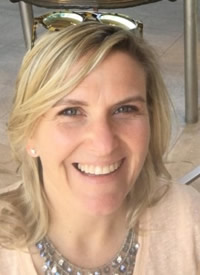Computer Science Blog
Networking Is Vital to a Computer Science Teacher
By Kerri Murphy
Posted on 2020-07-13

Disclaimer: The views expressed in this blog post are those of the author(s) and do not necessarily reflect the official position of the National Science Teaching Association (NSTA).
What was your inspiration for becoming a computer science (CS) teacher?
Were you looking for ways to inspire students to be creative and apply their learning to solve problems? Interested in opening up career paths for all your students, in turn creating more hope for the future of innovation? Trying to instill perseverance and confidence?
“Coding is today’s language of creativity. All our children deserve a chance to become creators instead of consumers of computer science.”—Maria Klawe
“…[B]iology and computer science—life and computation—are related. I am confident that at their interface great discoveries await those who seek them.”—Leonard Adleman
These are all excellent reasons to start teaching computer science. It’s also really fun! And completely different. Classrooms are student-centered and allow for creativity. You become a facilitator, a manager, a coach. Computer science teachers help students with careers and passions. We include opportunities for students to express themselves. When I taught mathematics, I didn’t think I had time to apply Black Lives Matter topics to algebra. I didn’t have a place to address LGBTQ concerns or provide a chance for students to express their views on remote learning.
You’re teaching a computer science course next year (or five!). Now what do you do?
We often find ourselves on our own in our schools. We may be part of the math, business, tech, or science department in our school, but we are often the only computer science teachers. There may be no one in your district to collaborate with for advice and direction.
It is still true that if you want to be a great teacher, you must never think you have all the answers. In computer science, you will never stop learning. You must learn new content, new strategies, marketing, community impact, and career pathways.
And you must become skilled in networking.
When you attend professional development, build relationships. Be open to the new style of teaching and learn the content, but do not underestimate the value of networking in this field. Join the e-mail groups the facilitators suggest (e.g., Computer Science Teachers Association (CSTA) CSTA, local chapters) and Twitter and Facebook groups for the class (e.g., Advanced Placement Computer Science Principles) or program (e.g., CodeHS) you are teaching. Join their working groups (e.g., NSTA Networks, Carnegie Mellon Computer Science Academy (CMU CS) Academy). Participate as often as you can.
Attend conferences, like the STEM20: Virtual Event, the National Science Teaching Association’s newest conference.
Conferences provide priceless opportunities for networking.
At my first NSTA STEM conference, I attended a session about robotics. I learned about costs, planning for groups and competitions, robots you code versus build, and more. At the end of the session, I connected with four teachers interested in adding full computer science programs at their schools: programming courses, game design, robotics, AP courses. We shared ideas and met later during the conference. I felt less isolated in my new career endeavor.
More CS teachers attend NSTA conferences each year! Join us on July 27–30 for NSTA STEM20: Virtual for your next computer science networking experience! New this year are the Robot Roundup (MS and HS strand days) and Computer Science Roundtable (HS strand day). The Robot Roundup features multiple teachers sharing lessons and activities for their robots. Watch short introduction videos, then decide which teachers you would like to speak with. The Computer Science Roundtable is an “unconference/edcamp”–style networking session. Attendees choose CS topics and break into discussion groups twice during this workshop.
NSTA is interested in exploring computer science as a science. What can be incorporated into the standards to include these concepts? How can the iteration process in design and build align with scientific inquiry methods? Have you noticed more computer science–, robotics–, and STEM–related sessions and exhibitors at our conferences in the past few years?
My advice: Register for STEM20: Virtual! Make note of the multiple panels and sessions for Computer Science and STEM Ecosystems each day, then plan to spend time networking and collecting ideas and contact information from your peers.
See you there!

Kerri Murphy
Computer Science and Robotics, Norton High School
NSTA STEM20: Virtual Event, High School Strand Lead
msmurphycs18@gmail.com
Twitter: @cs_murphy
Kerri Murphy studied industrial engineering at the University of Massachusetts at Amherst and worked in industry as an engineer and consultant across the United States before following her pathway to education. After earning her master’s degree at the University of Massachusetts at Boston, she taught math for 18 years and started teaching computer science five years ago. Murphy now teaches computer science and robotics at Norton High School in Norton, Massachusetts; chairs community STEAM teams; and coaches high school eSports and boys varsity tennis. She is the High School Strand Lead for the NSTA STEM20: Virtual Event.


